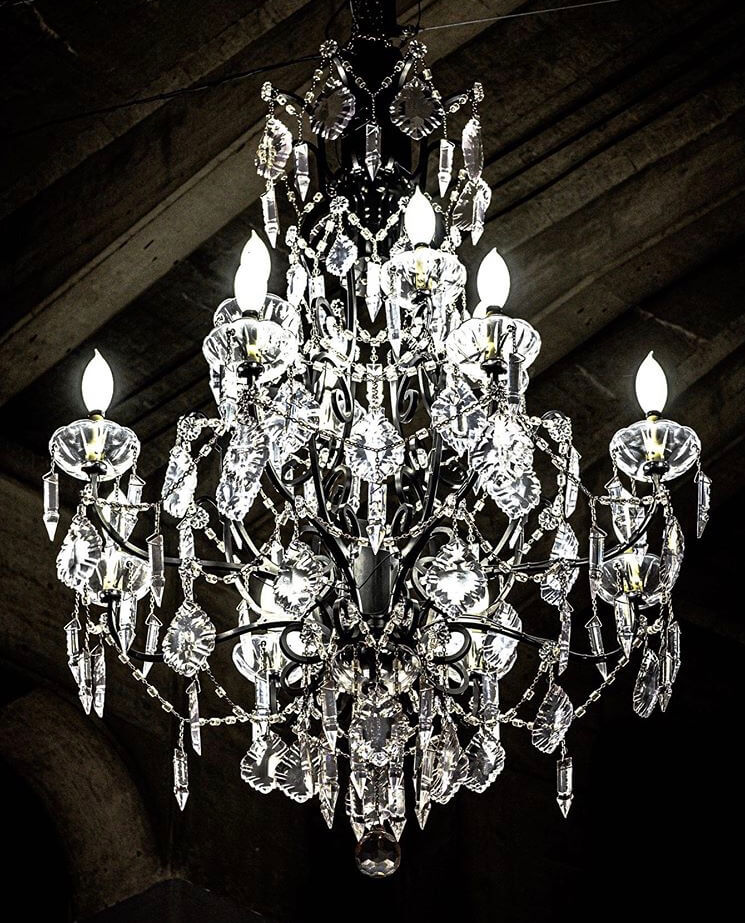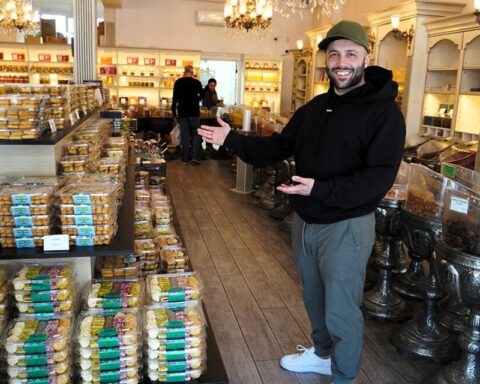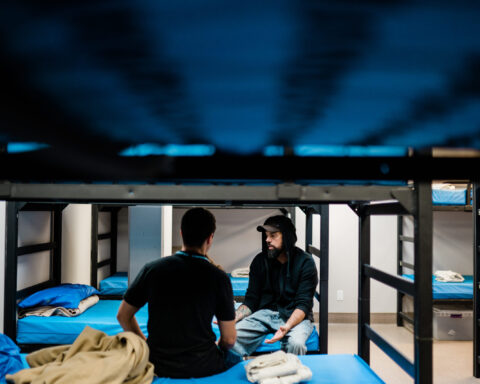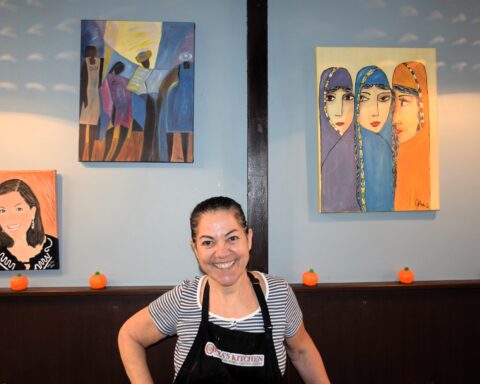The Greater Vancouver Area is home to around two-and-half million people and has been called the second most expensive place to live on the planet, according to Demographia. The city of Vancouver has a homeless population of 2223 with 614 people living on the streets and another 1609 people living in shelters like emergency centres, safe houses and hospitals. So when it was announced that a 4.8 million dollar chandelier was being built as part of a public art project, people were understandably upset.
Head’s Spinning
The stainless-steel structure, dubbed the Spinning Chandelier, is eight metres tall, weighs 3.4 tonnes and hangs from the Granville Bridge downtown near Vancouver House. The chandelier’s unveiling happened late last year. The neo-futuristic chandelier was designed by award-winning Vancouver-born artist Rodney Graham and commissioned by Westbank Corp. Vancouver’s bylaws state that all buildings and rezoning projects larger than 100,000 square feet require developers to contribute one piece of public art. The chandelier lights up twice per day, drops down, rotates for four minutes then returns to its starting position.
Much has been written about the expensive decoration, with many people criticizing the developer for placing the chandelier near where Vancouver’s homeless community gathers. Many people have asked the question: “what could’ve done with that money for homeless people?” For me, the first question that came to mind was “how are they going to clean it?!”
Fun fact about Vancouver’s newest public art installation – each crystal on the $4.8Million chandelier under the Granville Bridge represents 3 homeless people in Vancouver who probably could’ve been helped with a portion of that money, but didn’t. Isn’t art NEAT? It SPINS! 👎 pic.twitter.com/aAuC1x5bfg
— vanessa doban (@vanessadoban) November 30, 2019
A Tale of Two Cities
Looking at the chandelier was like time travel, it brought me to my childhood home in Turkey during the ‘80s. Many middle-class families had a chandelier or two chandeliers hanging in their homes. They were overpriced but people loved to have them anyways, they were a symbol of opulence and power. It’s as if we wanted to be as shiny and important as our chandeliers.
I remember my parents disassembling the chandeliers twice a year, putting the pieces in a bowl, meticulously washing each crystal then placing the pieces on a towel in the backyard and leaving them under the sun to dry. Cleaning is a big part of Turkish and Middle-Eastern culture. I remember playing a colour game by looking at the rainbows the crystals caused by the reflection of the sun. Those crystals were my sun catchers. I always noticed there was a disparity between our ordinary lives and those expensive chandeliers.
Looking at Vancouver’s giant new art piece, I realized that the chandelier was also a symbol of opulence, power, and disparity. It made me want to call my mother.
Some have argued that the 4.8 million spent on the chandelier could’ve been put towards social housing and affordable houses. Vancouver was recently ranked the city with the second-least affordable housing market (after Hong Kong) by Demographia. How many heaters could’ve been bought for homeless people living in tents with 4.8 million dollars? How many more shelters could’ve been built? Or how many meals could’ve been provided for homeless people so they don’t have to eat garbage with that money? These are the things I think about, especially in the winter when temperatures regularly plunge below zero.
‘Artwashing’
But these are nonsense questions. The aim is not taking care of homeless people but getting rid of them. And art has an important role when it comes to the displacement of marginalized communities. Politicians, developers and the like who support gentrification start with gestures like an expensive public art piece. Soon after, museums and galleries, fancy cafes and shops start to pop up and before you know it, the area’s transformed into the cool new place in town. Then the cost of rent doubles, people are forced to move from their homes and the term “affordable housing” becomes a pipe dream. This practice is known as “artwashing.” I think the Spinning Chandelier is an object used for a different kind of washing than the one I remember from back home.
I found one video of the unveiling of the chandelier which featured the owner of Westbank Corp, Ian Gillespie. “How can you use architecture to support culture in rich people’s lives,” he asks in one of the videos. “We craft the world around us! The core of Westbank’s mission is to create a body of work, with a high degree of artistry that helps foster more equitable, beautiful cities. The world has enough ordinary!”
Read this. Not merely a critique of Rodney Graham’s Westbank-funded Granville bridge chandelier, it’s an astute look at the mirage under developers’ labels (“affordable housing”)…#vancouverart #unaffordablecity https://t.co/hE26q6sB6n
— Ash Tanasiychuk (@formatnoauto) December 20, 2019
Gillespie and developers in general, position the areas around their developments to be luxurious, artsy places and they become that with the support of the city. This is perception management and the City of Vancouver helps developers have their way with this city! Interestingly, Mayor Kennedy Stewart described the Spinning Chandelier as the most important piece of public art in the history of Vancouver. That’s an insult to all the pieces of public indigenous art in a city surrounded by totem poles!
‘Opulence, power, and disparity’
I Immigrated to Vancouver two-and-a-half years ago because I fell in love with nature and the greenery in the city. It was former mayor Gregor Robertson’s plan to make Vancouver the most sustainable and green city in the world but only two-and-half years later, I can see the change. Vancouver is more concerned with being famous and rich people than its ethereal nature. People seem to care more about appearances than they do about the city’s livability.
I guess housing will never be affordable in Vancouver because apparently some people don’t want it to be.
Some columnists referenced Queen Marie Antionette’s famous quote from 1789, “Let them eat cake,” her response when she learned the peasants of France were hungry and had no bread. The columnists said that the chandelier is a way of saying “Let them eat cake!” and giving the finger to the homeless people of Vancouver. While I’m not sure how the Granville Bridge area will look, I do know that things didn’t turn out well for Marie Antionette and the French monarchy.
This story has been produced under NCM’s mentoring program. Mentor: Marcus Medford
Ayşe is an author, journalist and volunteer Communications Coordinator for the Vancouver Turkish Film Festival. She moved to Vancouver from Turkey with her dog and two children in 2017. Ayşe is the author of Anneee! Anne Oluyorum! (*Mooom! I’m becoming a Mom!) and Kanadalılaştıramadıklarımızdan mısınız? (*Not Canadian Enough?). Ayse also writes weekly articles for the independent internet newspaper T24.




